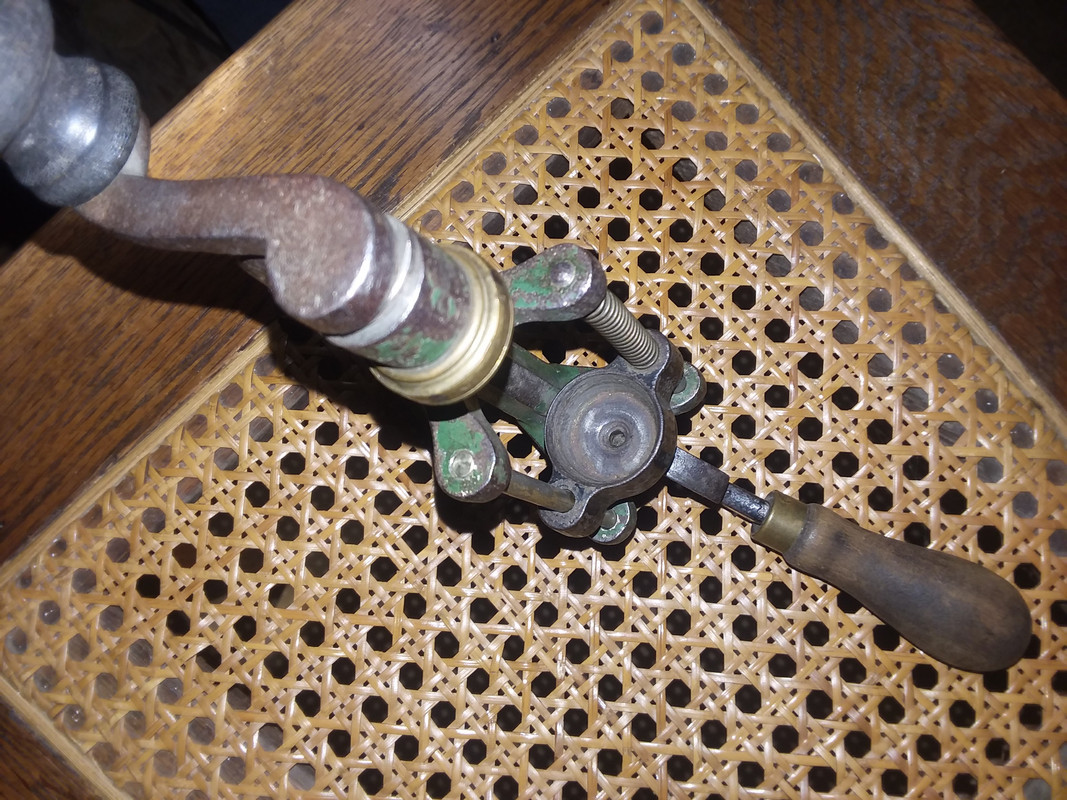When Gil asked what prevents the shell from spinning in the roll crimper in my second photo yesterday, I didn't have a good answer. I knew it worked but I had never questioned that aspect of its' function. I got it back out when I got home this evening and looked closer. The black casting which holds the shell head is tapered inside. A 12 gauge shell doesn't actually touch the bottom. As you put pressure on the lever to advance the shell into the roll crimp head, there is nothing but friction of the shell rim being forced down into that taper that prevents the shell from rotating. I then put a 16 gauge shell into this tool and I think the base almost hit bottom, but there was still no lateral movement of the shell head in that tapered recess. Just for kicks, I advanced that shell into the crimp head and turned the handle. The shell still didn't rotate, but the 12 gauge roll crimping head didn't allow the smaller diameter case mouth to start rolling inward, and it started to roll outward instead. Reversing the handle unscrewed it from the crimp head, and the threads appeared to be 5/16" standard. It occurred to me that it wouldn't be hard to chuck a piece of brass into my Unimat or South Bend lathe and make another crimp head that would permit this tool to be used for 16 gauge as well. There is nothing on this tool to indicate what company produced it, or where. Only a "12" stamped into the frame.
